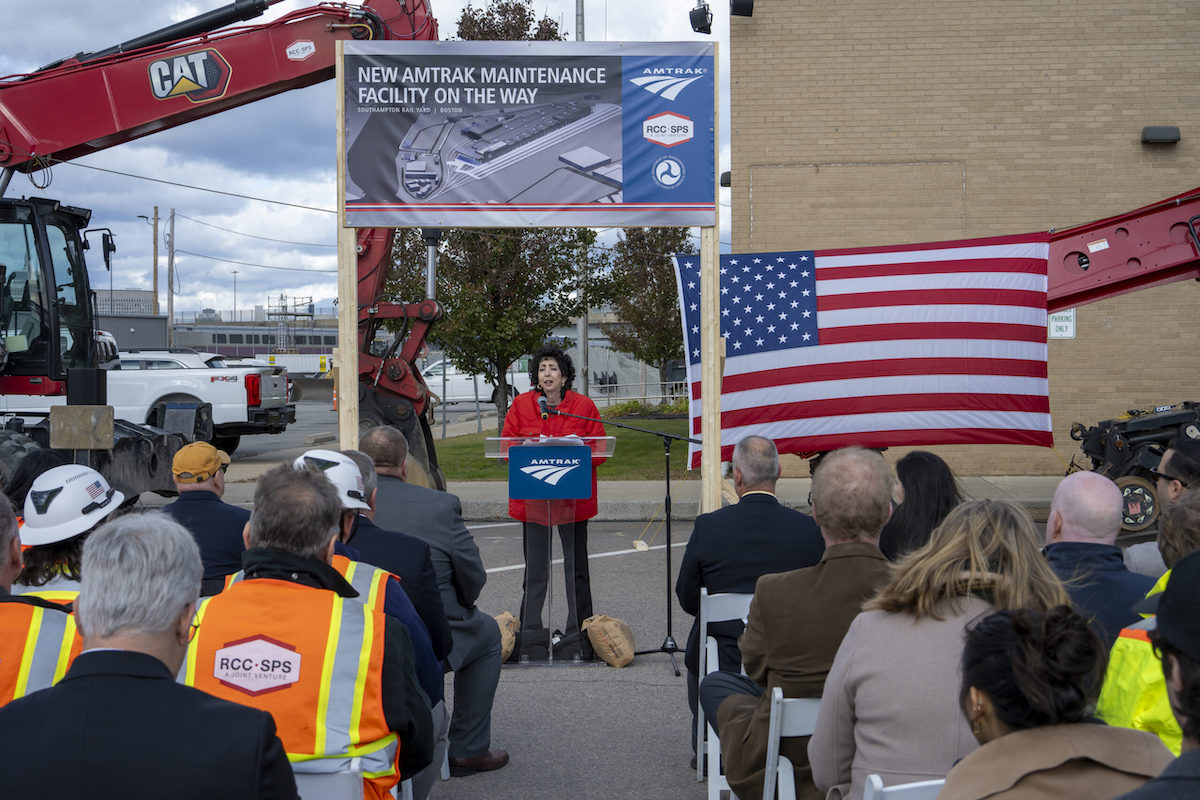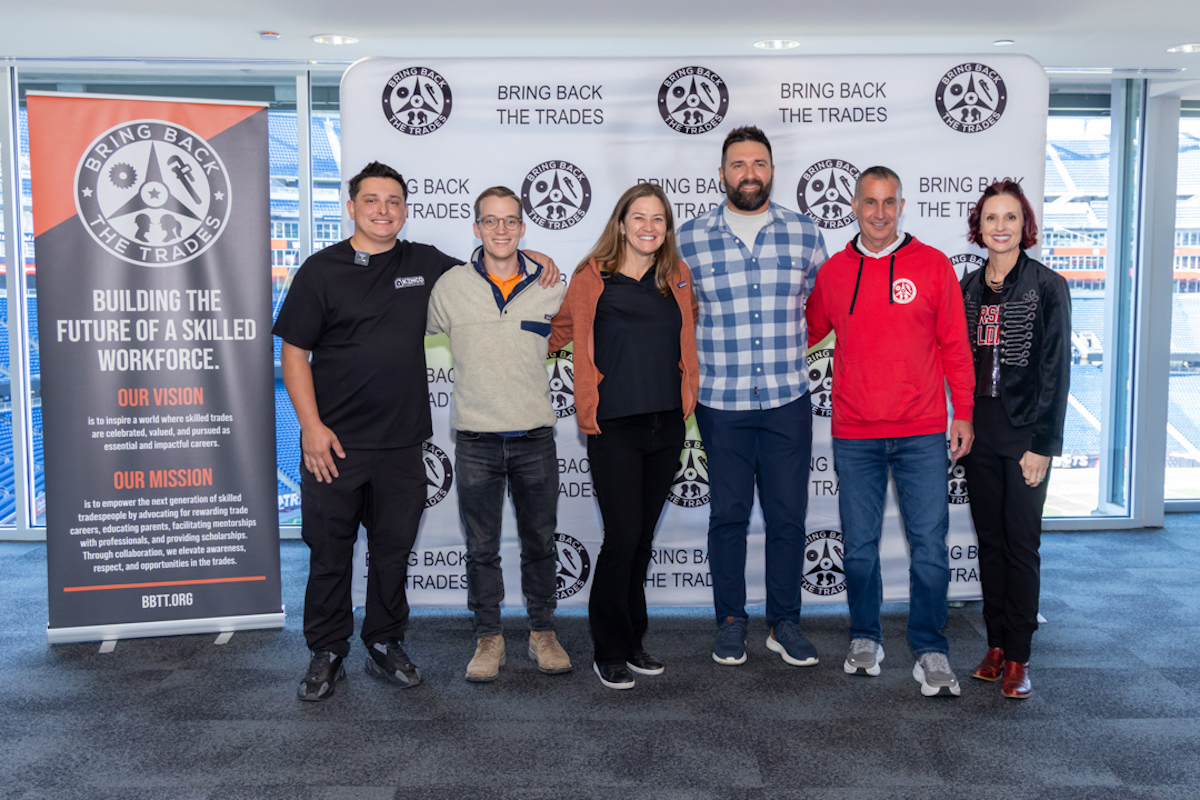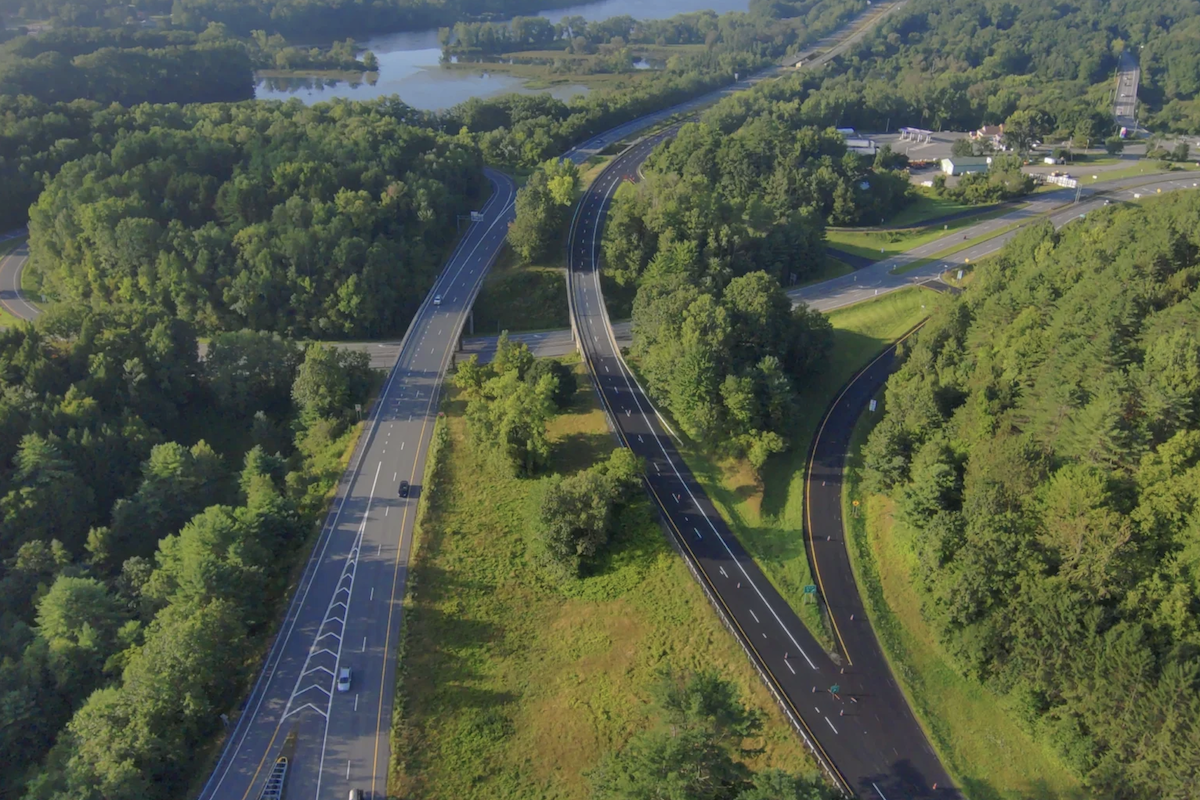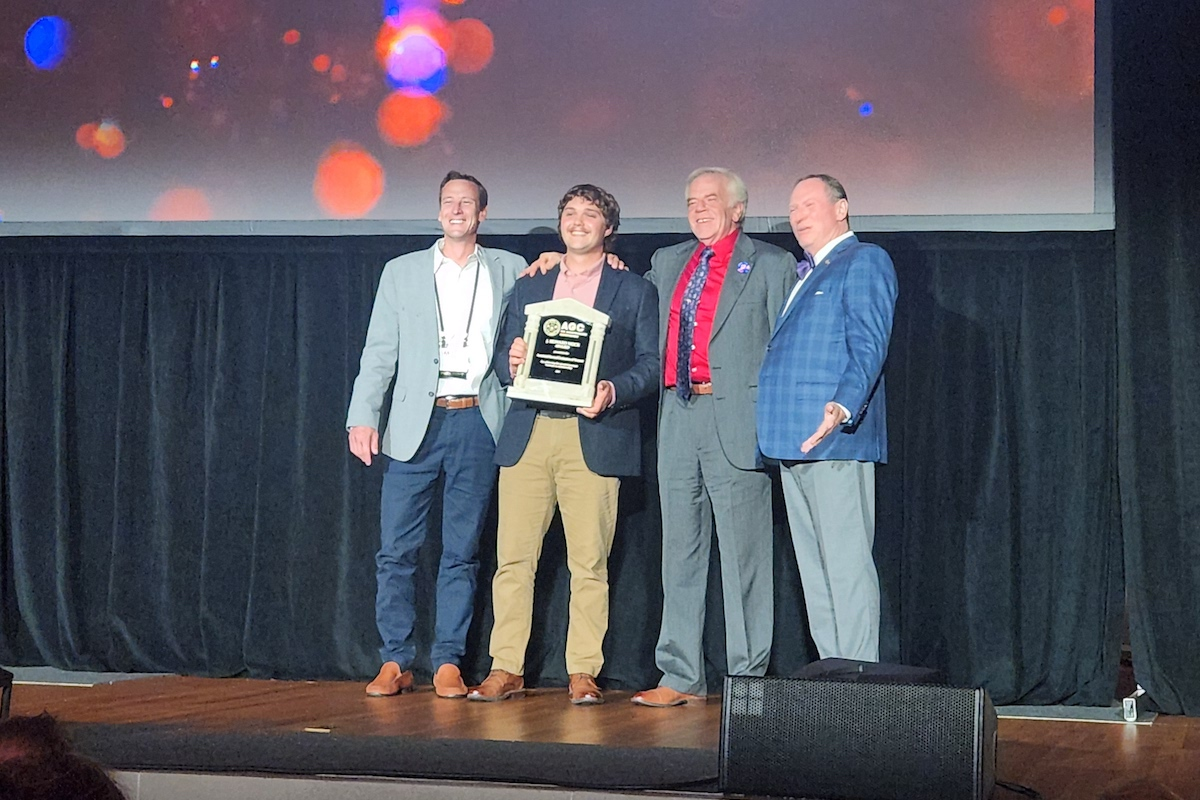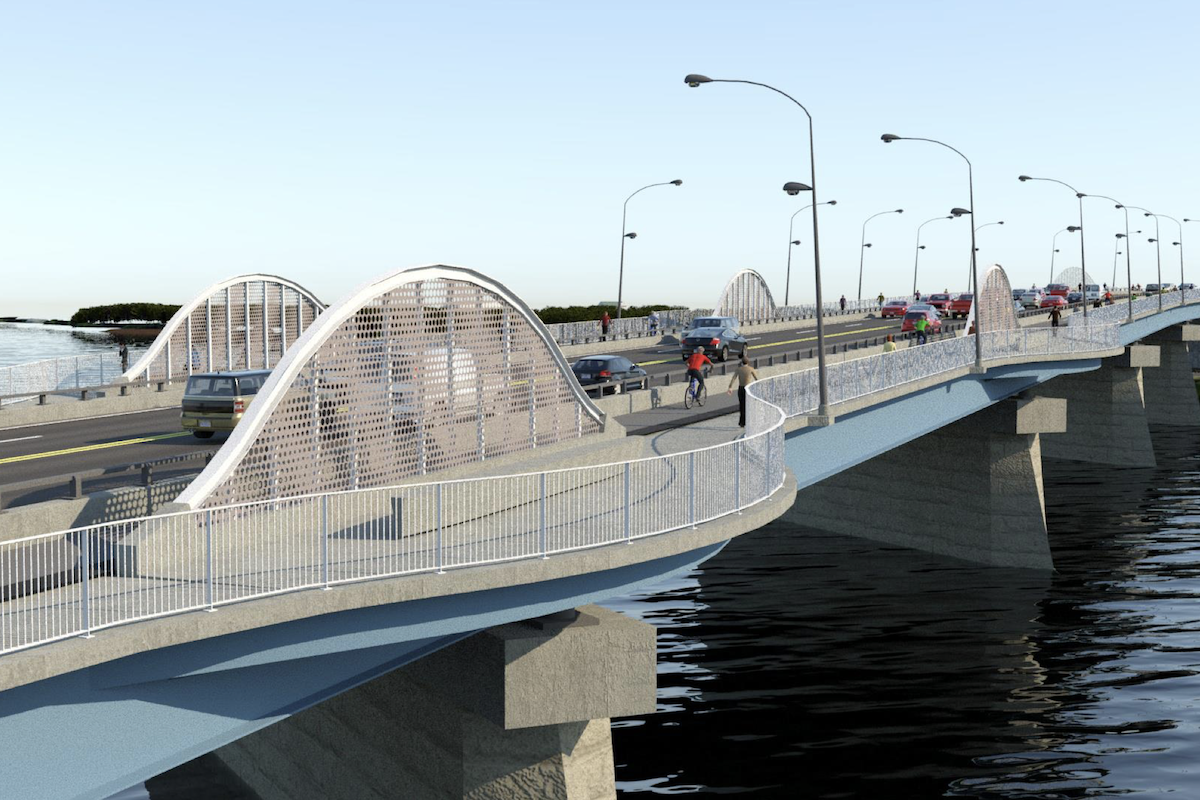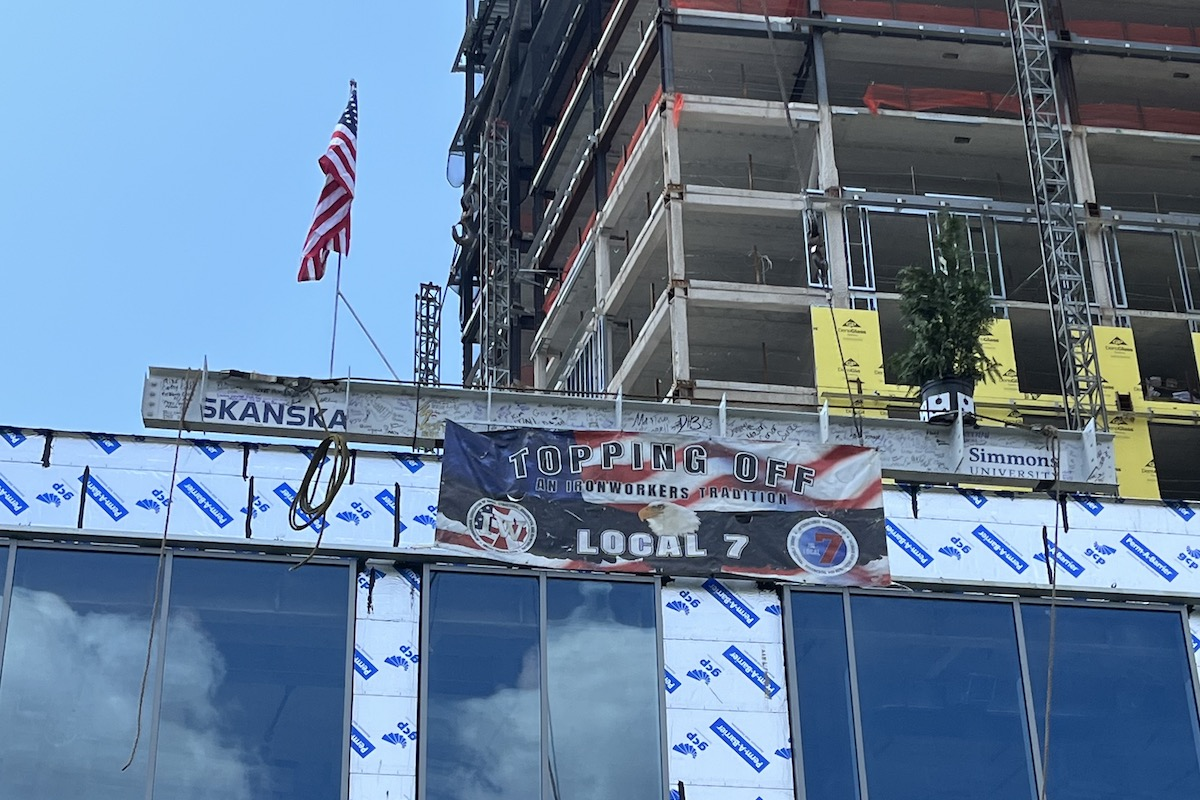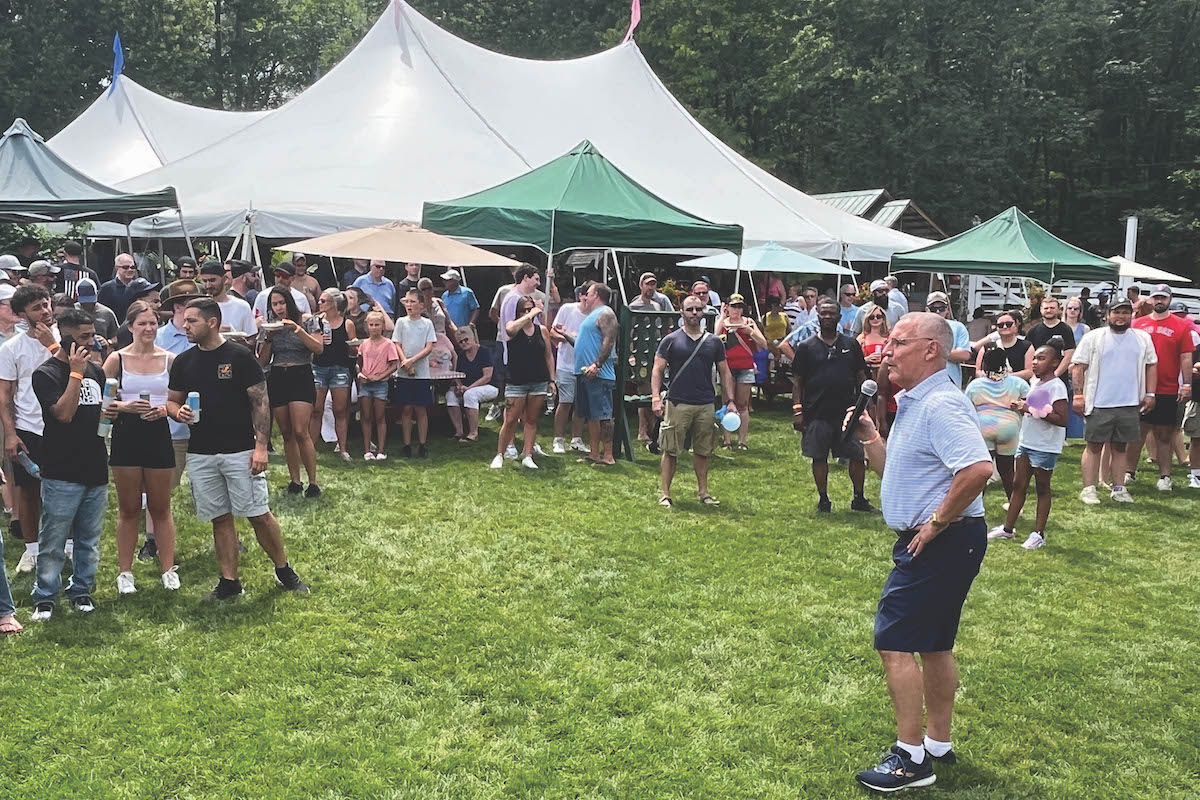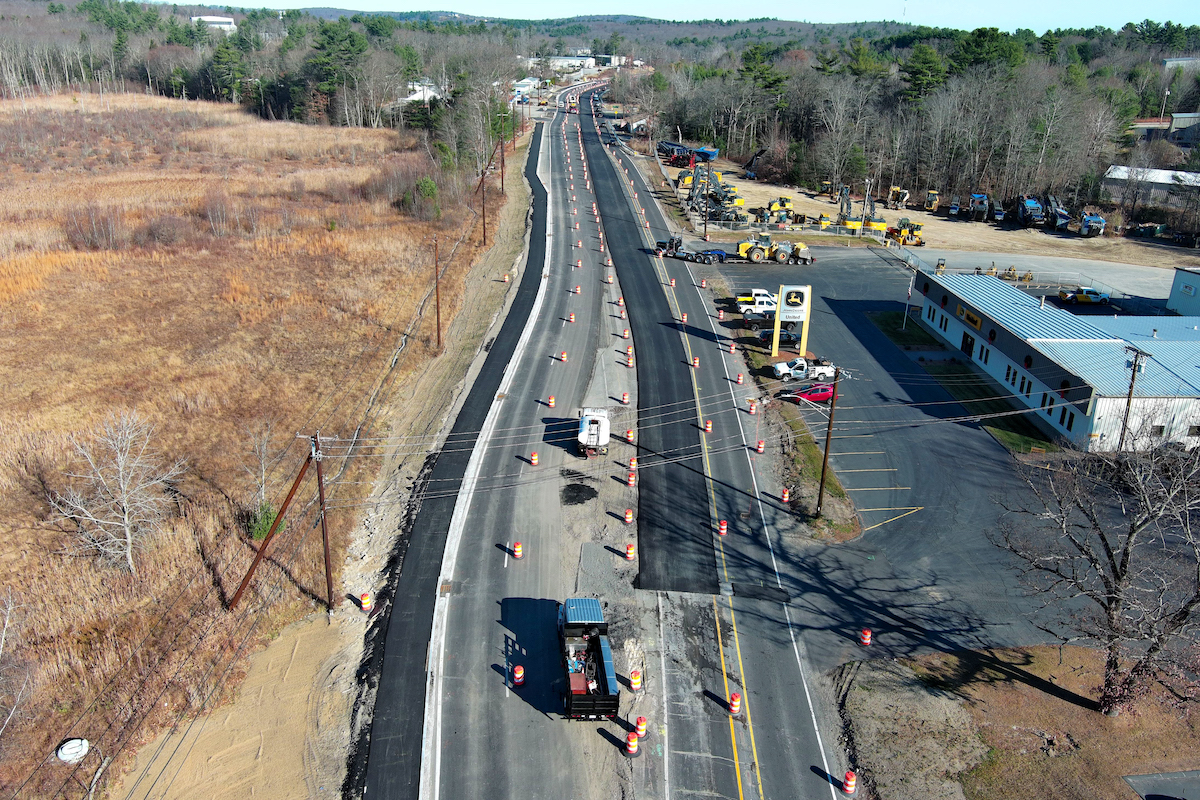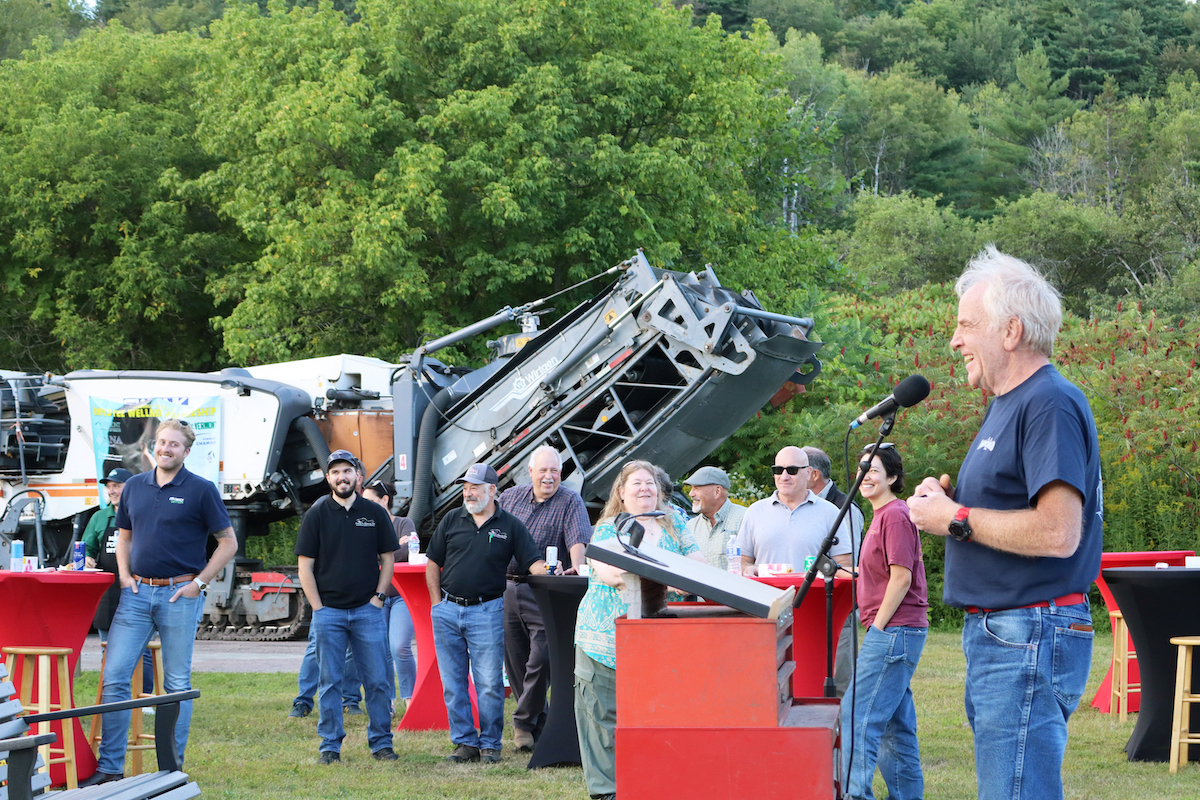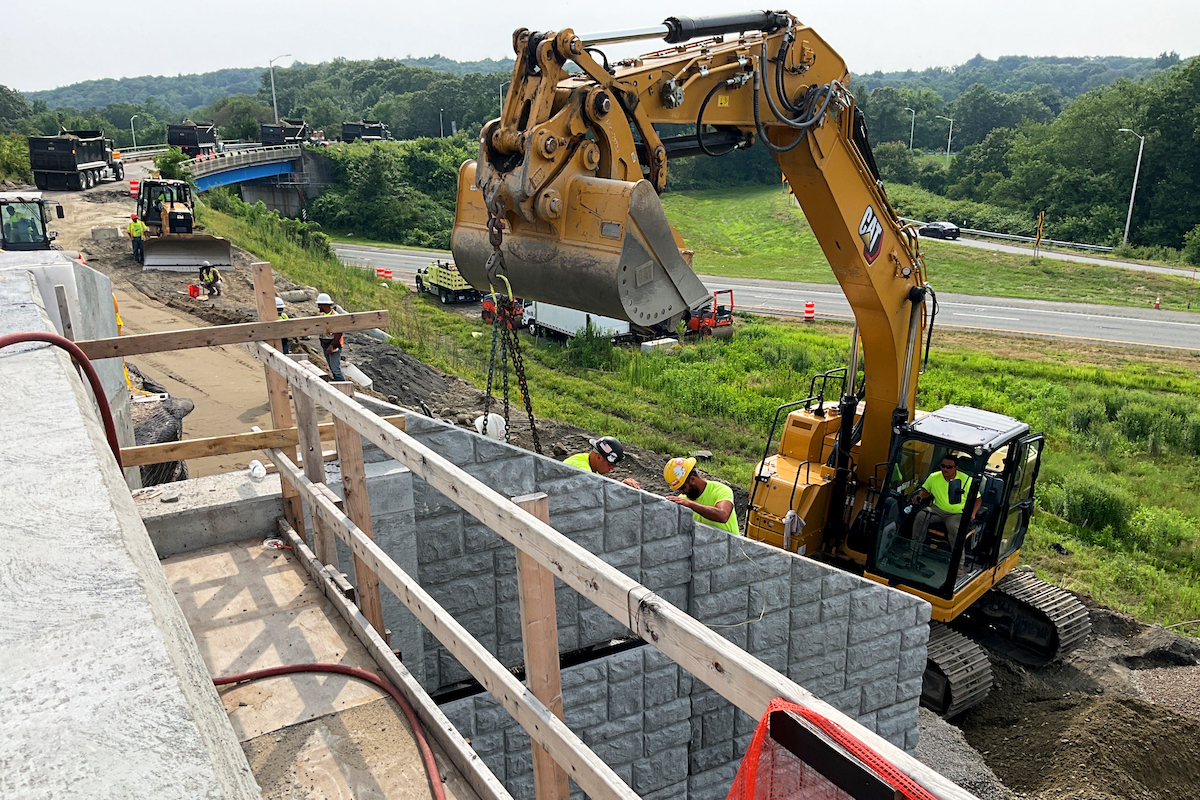Spanning the White River, a $24.5 million bridge replacement project in Hartford, Vermont, features a new alignment and updated standards.
“This bridge replacement will continue to serve the community by providing a safe crossing option over the White River for vehicles and pedestrians,” said Mahendra Thilliyar, Vermont Agency of Transportation (VTrans) Project Manager.
VTrans undertook the project in Windsor County after the original Hartford #7 bridge was deemed structurally deficient, with advanced corrosion, concrete deterioration, and many maintenance needs. Built in 1929 and reconstructed in 1973, the narrow, 559-foot-long, town-owned bridge has four spans, two approach spans, and no shoulders.
The agency considered rehabilitating the bridge, but a 2019 engineering study recommended a full replacement on a new alignment. The new bridge will flow into and from Christian Street, rather than VT 14. Both the old and new structures will connect with Old River Road and Mill Road to the south. Engineering of the bridge was undertaken by the Vermont Agency of Transportation with design consultant, HNTB, which has offices in South Portland, Maine.
The project will create a new 550-foot-long, three-span, integral abutment bridge that is 8 feet wider than the existing structure, which will meet current Vermont standards. The bridge will rise higher across the river and have two 11-foot-wide travel lanes, 4-foot-wide shoulders, a 5.5-foot-wide sidewalk, integral abutments, and wingwalls and a curved roadway at the ends.

| Your local Esco Corporation dealer |
|---|
| Genalco |
In addition, the new bridge will have sidewalk lighting that is similar to the existing lighting along VT 14, a more aesthetic bridge railing, and variable depth webs, according to VTrans. The scope of work includes installing curbs and sidewalks on VT 14.
Integral abutment bridges refer to structures with a continuous deck and no movable expansion joints or bearings at the abutments. These bridges have been growing in popularity, according to a paper co-authored by Susan Faraji, Ph.D., Professor of Structural Engineering at the University of Massachusetts, Lowell (UMass Lowell).
“These types of bridges are more cost efficient, cost less to maintain, and are more durable than other bridges,” Faraji said. “However, they are more complex to design. With the elimination of expansion joints, the thermal expansion and contraction of the deck causes the abutments to move into or away from the soil behind the abutments. These movements alter soil pressure on the abutment in a way that causes the soil state to vary from fully passive to fully active during seasonal thermal cycles.”
In most cases, the Hartford Bridge #7 geometry and length would produce excess thermal movements and unbalanced pressures, consequently ruling out using integral abutments. However, VTrans recognized an opportunity to gain a greater understanding about force distribution by studying this bridge for five years during and after construction. The results will aid in understanding design parameters for future projects.

| Your local Volvo Construction Equipment dealer |
|---|
| Tyler Equipment |
VTrans teamed up with UMass Lowell and HNTB for the “Integral Abutment Monitoring for Complex Structures” study, which cost about $452,360 for the approximate 300 sensors and the data acquisition system. That money does not include costs for the project team.
The sensors include pressure cells, extensometers, tiltmeters, and strain gauges, which will measure the bridge movements, rotations of the abutments, and strain put on the girders and piles. The agency hopes the research will “validate the original design model and support the development of design guidelines for longer, more complex integral abutment structures.”
The agency reviewed environmental factors, such as contaminated soil and threatened or endangered species. That review found several bat species of conservation concern within the project area. Consequently, tree clearing activities were only permitted between September and May when the bats are not present in the area.
Contaminated soils were found on the job site. To mitigate the risk of these soils, VTrans required the contractor to test the soils and develop a soil management plan on how to reuse or dispose of any contaminated soils, according to VTrans.

| Your local Wirtgen America dealer |
|---|
| United Construction & Forestry |
| WI Clark |
Invasive knotweed was found within the project area. Knowing this, the contract calls for the contractor to excavate the infested materials and bury it on site. A spokesperson from VTrans said that this will allow the planting of native species on the reconstructed riverbank.
VTrans awarded the construction contract to Kubricky Construction Corp. of Queensbury, New York, part of D.A. Collins Cos. since 1983. Construction began in April 2023. Soon after, utilities began moving their lines and installing erosion and sediment control system on the river’s south side.
Mark Bacon, Project Manager for Kubricky, said that the construction company faced numerous and varied challenges, including navigating unforeseen obstacles and changing conditions, “yet our team rose to meet each one with resilience and ingenuity.”
It was determined that causeways in the river would be needed for building the new bridge and demolishing the existing bridge. Federal and state permits were obtained for the installation of these causeways over multiple construction seasons, explained a VTrans spokesperson. Crews also began working on placing fill for the new bridge’s embankments.

| Your local Hyundai dealer |
|---|
| Equipment East |
An early temporary causeway was needed to work on the new bridge. However, in July 2023 — mere months after getting started on the job — during heavy rains and flooding, the river topped the original bridge and caused the causeway to wash out, which set the project schedule back a few weeks.
“When the causeway flooded due to the rainstorms in July 2023, the contractor was quick to action,” VTrans Resident Engineer Jay Strong said. “[The company’s] responsiveness minimized delays and kept project completion on track.”
Crews worked on sewer, water, and drainage work, followed by the drilled shafts through the summer of 2023. The company erected the steel-plate girders in November 2023. The bridge will be paved with concrete.
During the construction of the new bridge, the existing VA Cutoff Bridge remained open to traffic. A 60-day roadway closure along VT 14 between Ferry Road and Christian Street was needed to realign Christian Street with the new bridge. During the 2023 closure, pedestrian and bicycle access was maintained on this portion of VT 14. VTrans educated the public about a detour, hosting a pre-closure public meeting in June 2023. The contractor successfully completed the 60-day roadway closure and reopened the section of VT 14 to traffic in fall 2023.

| Your local Trimble Construction Division dealer |
|---|
| SITECH Northeast |
During the ongoing construction there are possibilities for daily lane closures with alternating one-way traffic along VT 14. The possibility also exists for a temporary VA Cutoff Bridge closure, which the contractor may utilize during construction. To date, the contractor has not had to close the existing bridge.
Kubricky’s commitment to safety was paramount for the project.
“We are incredibly proud to report that we achieved zero lost-time injuries throughout the duration of this project,” Bacon said.
VTrans anticipates the new bridge opening in October 2024. Once traffic starts flowing on the new bridge, the agency will close the VA Cutoff Bridge and eventually remove it. Construction of the project was funded 100 percent by the federal government.

| Your local Case Construction Equipment Inc dealer |
|---|
| Monroe Tractor |
| Beauregard Equipment |
“After years of planning and design,” Thilliyar said, “we are happy to see this bridge replacement come to fruition.”
Photos courtesy of Vermont Agency of Transportation






















